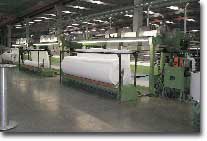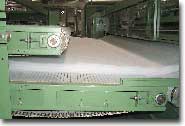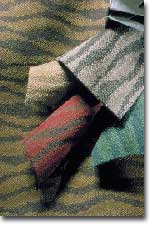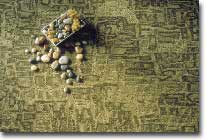T
he U.S. economy is still running strong as it enters the tenth year of expansion. Real
GDP grew in the first quarter at an annual rate of 5.4 percent on top of the blistering 7.3-percent
gain in the fourth quarter.
Consumer expenditures shot up 8.3 percent at an annual rate, after rising 5.9 percent in the
fourth quarter. Business fixed investment shot up 21.2 percent, following a modest 2.9-percent
increase the previous quarter. Investment in business equipment and software surged 23.7 percent,
while spending on residential structures rose 13.4 percent. Only inventory investment was sharply
down in the first quarter, which subtracted 1.4 percentage points from GDP growth.
The latest reports indicate that the U.S. economy, with part of the first-quarter strength
arising from a mild winter coupled with the latest increase in interest rates by one-half of a
percentage point in the second quarter, can be expected to slow down. This would come as a welcome
development in light of the Federal Reserve’s concern about inflationary pressures. Nevertheless,
another rate hike is likely to occur in early July.
The producer price index for finished goods declined 0.3 percent in April, after rising by
1.0 percent in March and February. The decline was due to a sharp 4.1-percent drop in energy
prices, which rose 5.8 percent in March and 5.2 percent in February.
Consumer prices were flat in April after surging 0.7 percent in March and 0.5 percent in
February. The core inflation was up 0.2 percent.
Industrial Production Picks Up The Pace; Business Sales Surge
Industrial production has picked up speed in the last two months after slowing down in
February. Output grew 0.9 percent in April and gained 0.7 percent in March. This was the strongest
gain since August 1998.
Factory output also rose 0.8 percent with most industries registering gains. Utility output
rebounded 2.8 percent.
Housing starts bounced up 2.8 percent in April to an annual rate of 1.663 million, partially
offsetting the 11.2-percent drop in March.
Construction of single-family homes edged up 0.3 percent to 1.329 million. Multifamily units
rebounded 14.0 percent to 0.334 million after taking a 41.2-percent dive in March.
Housing construction was 6.5 percent stronger than last year, but the rise in interest rates
will bring new construction down.
The U.S. trade deficit widened in March to a record $30.18 billion, up from $28.71 billion
in February. Exports rose 2.9 percent led by capital goods and industrial supplies, while imports
rose 3.4 percent as oil prices surged.
Business sales surged 1.2 percent in March after rising 0.4 percent in February. Meanwhile,
inventories grew 0.3 percent. As a result, the inventories-to-sales ratio slipped to 1.31 from 1.32
before.
Greige Fabric Prices Rebound; Finished Fabrics, Synthetic
Fibers Prices Advance
Results for textiles and apparel were mixed. Textile output edged up 0.1 percent in April
following a strong 1.2 percent gain in March. The operating rate for textiles mirrored the output
pattern, staying flat at 84.3 percent.
Sales by textile manufacturers took a 1.2-percent dive in March, while inventories rose 0.6
percent. Thus, the inventory-to-sales ratio climbed to 1.57 from 1.54 in February.
The industry’s payrolls slipped 0.1 percent in April. The volatile jobless rate for textile
mill workers came down to 5.4 percent from 6.0 percent in March.
Retail sales fell 0.2 percent in April after rising 0.5 percent in March. Furniture stores
took in 0.3 percent more than the month before. Apparel and accessory store sales turned down 0.9
percent in April after surging 1.6 percent in March.
Producer prices of textiles and apparel rebounded 0.2 percent in April to erase a
0.2-percent decline in March. Prices rebounded 1.6 percent for greige fabrics, advanced 0.8 percent
for finished fabrics and moved up 0.7 percent for synthetic fibers.
Prices were unchanged for processed yarns and threads, and for home furnishings.
June 2000










